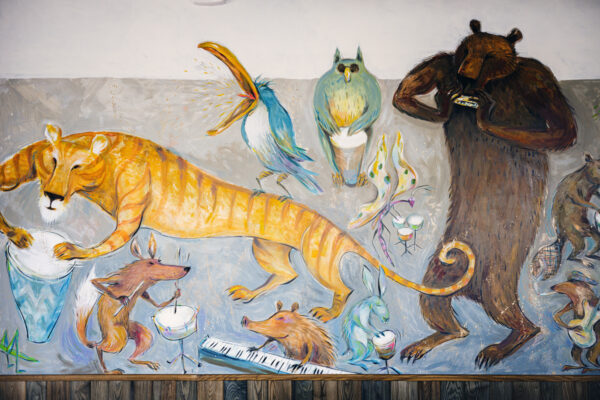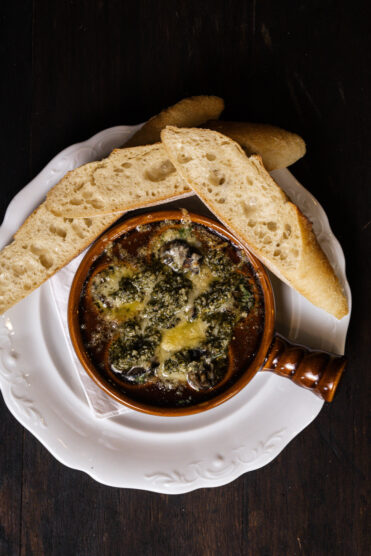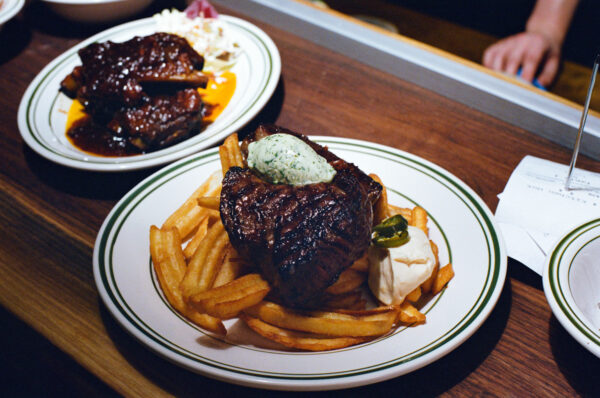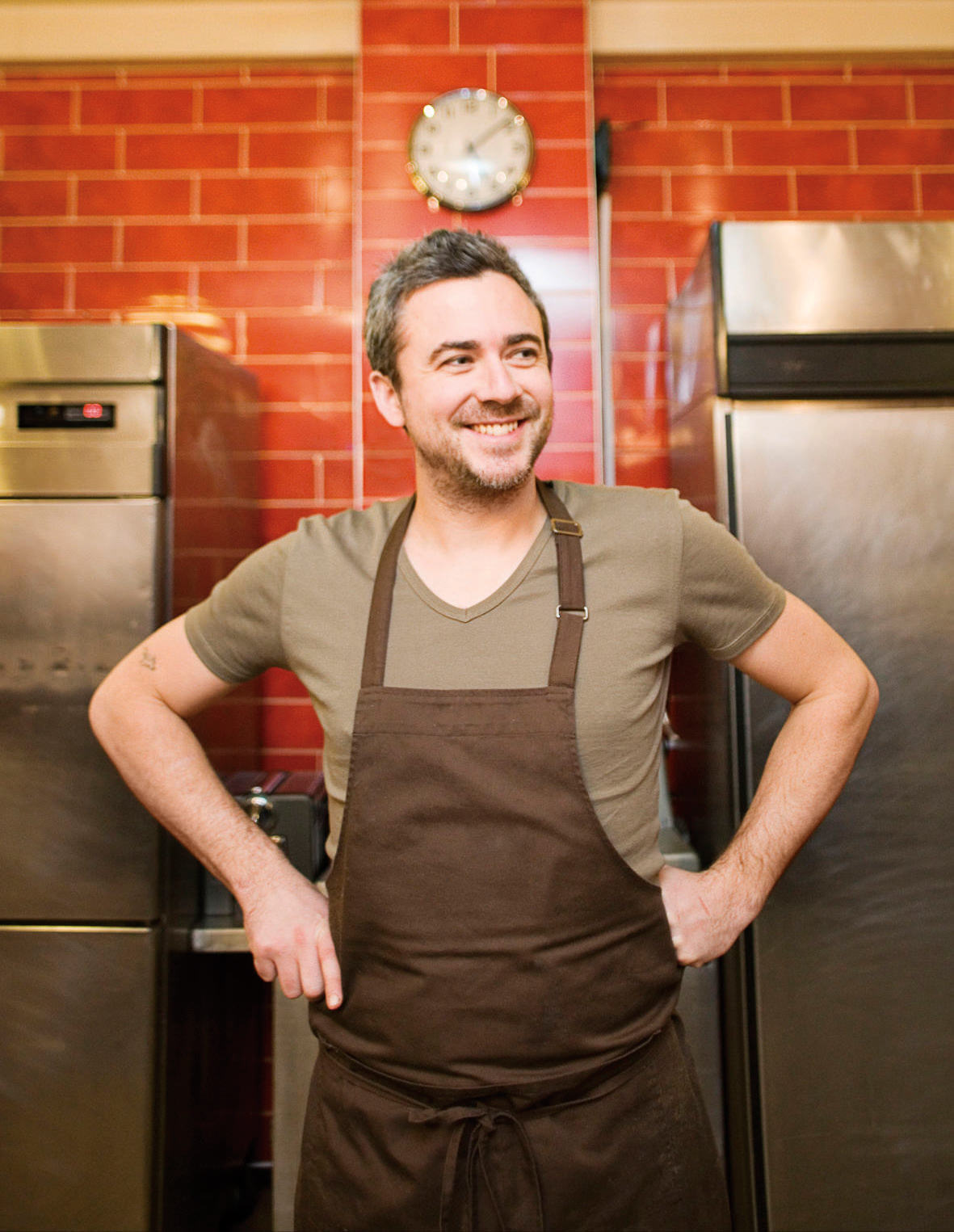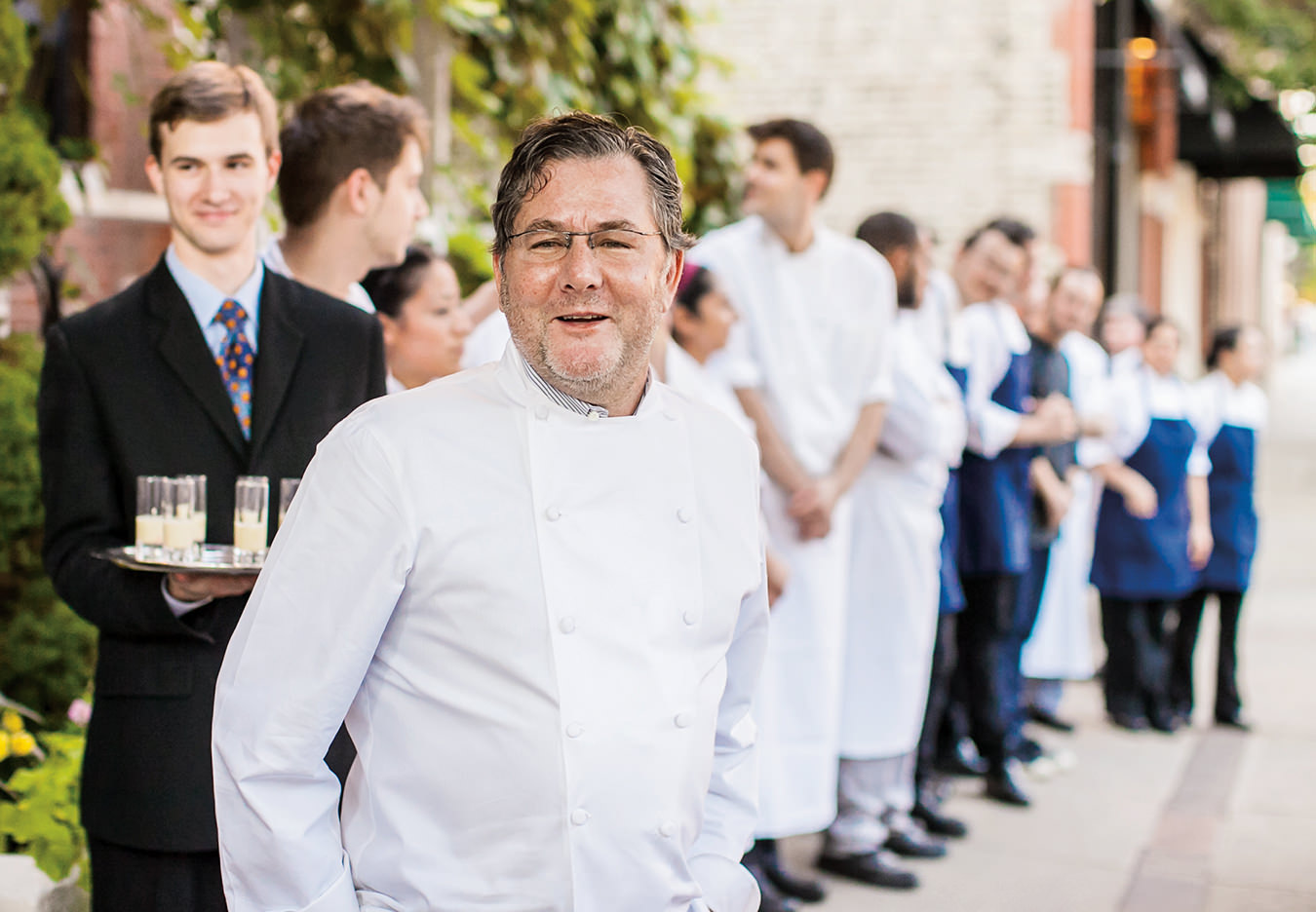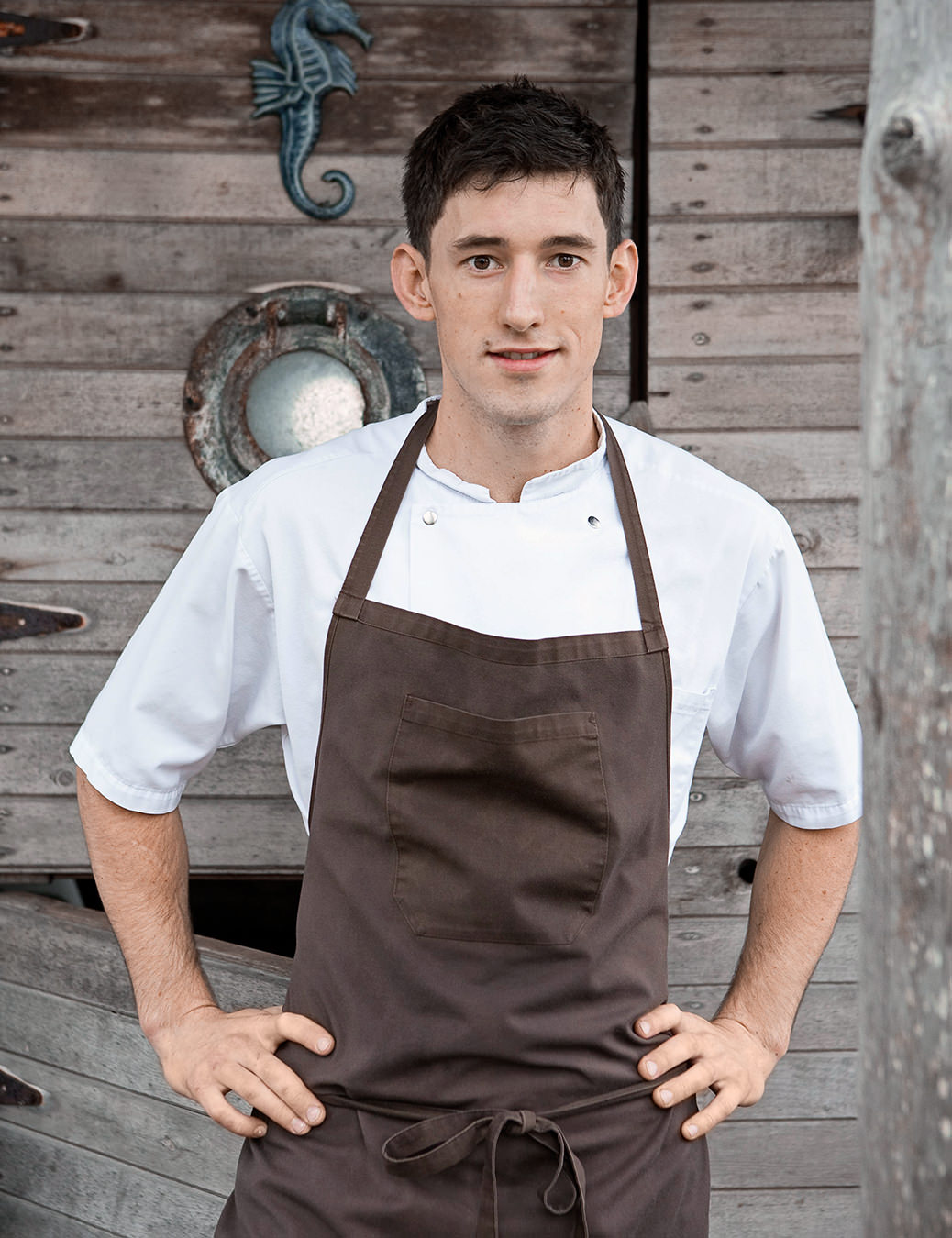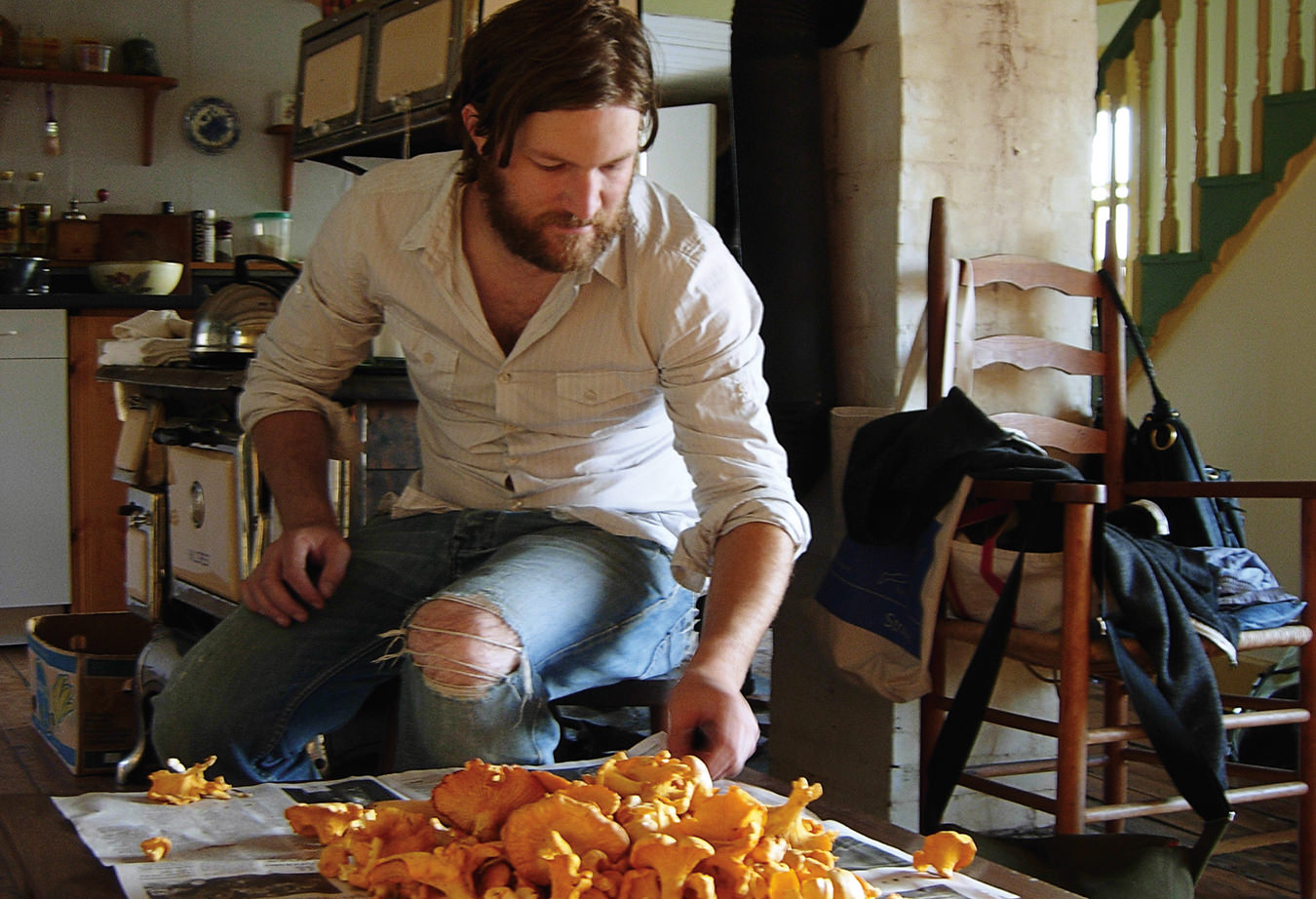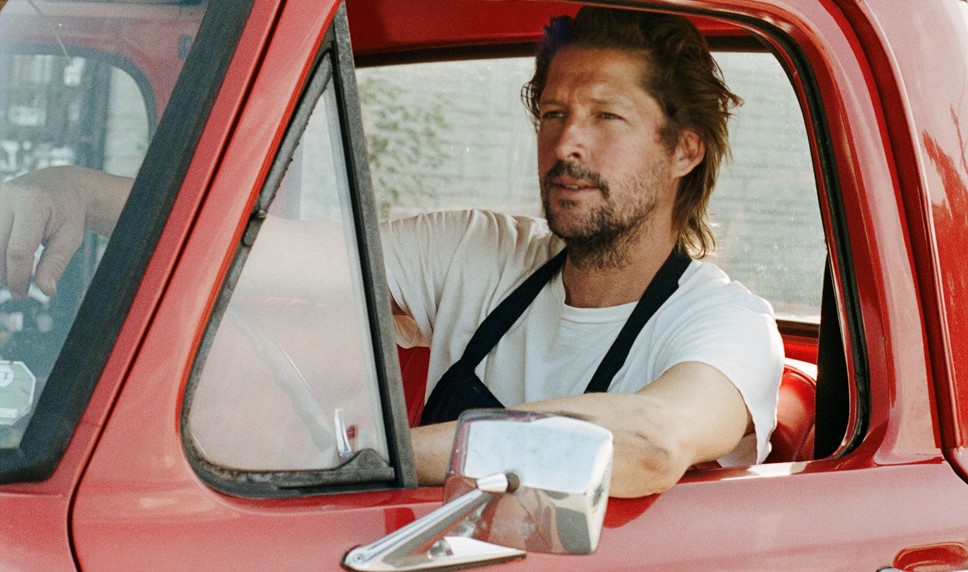
At the Chef’s Table: Dining In With Teo Paul
The low-key chef’s new restaurant Le Tambour Tavern is out-of-this-world and of it at the same time.
Sitting by the picture window of his new restaurant Le Tambour Tavern, the sepia-toned, midday November light washing over him, chef Teo Paul yawns wearily, his understandable fatigue from a stressful evening service followed by a busy brunch thrown into sharp relief. Opened at the end of August, Le Tambour has yet to achieve the machine-like efficiency of Paul’s wildly successful ventures in Toronto—the Ossington strip’s Union and Côte de Boeuf—and Heart’s Tavern and Bar north of Toronto in rural Grey County (Heart’s took sixth place in Air Canada’s respected Best New Restaurants rankings in 2022). And while there is no doubt it will in time achieve similar consistency as those before it, one thing about Le Tambour will set it apart from them for at least the next few years: its postal code.
Le Tambour isn’t located in one of Ontario’s trendiest areas. Instead, it finds its home in Hamilton, the gritty industrial city that, while only an hour’s drive west, many Torontonians seem to believe to be somewhere beyond the edge of the world. For Paul, the decision to set up shop in Hamilton was a logical one. While it lacks the electricity of the Ossington strip and the bucolic charm of popular vacation area Grey County, Hamilton offers something Paul deems necessary: a sense of connectedness to everyday life. “Here, people want to talk more, just converse longer. Just a little more community vibe to it. That’s what I love about restaurants. Hamilton just has a little more of that spirit,” Paul says, at the exact moment a curious Hamiltonian wanders in, asks him if he owns the place, and settles at the bar for a coffee and conversation with the two affable employees serving her. “I feel like we could evolve to something really great. Being here and being outside of Toronto, I feel like it could be part of the world”—a destination.
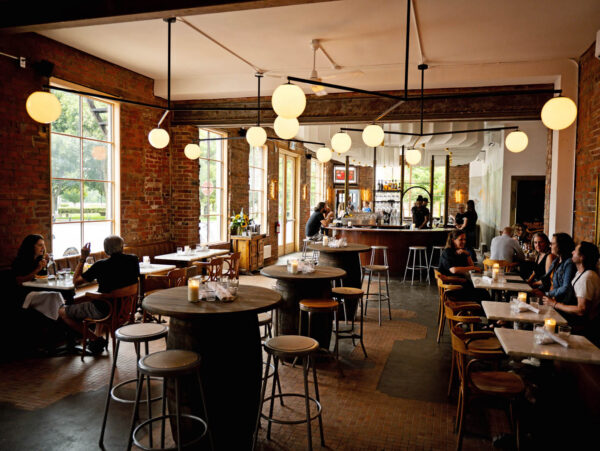
It is a sense of being a part of the world that Paul has always strived for in his restaurants. Inspired by his time spent cooking in Paris and Piedmont—where he fell in love with the roadside tavernas—he aims for a style of cooking and location that invite destination diners and random encounters alike. Born and raised in Toronto, Paul comes by his love of cooking honestly: from spending time with his grandparents. Cooking with them in their Stouffville kitchen, Paul learned homestyle Canadian cooking—mastering the art of grilling steaks with his grandfather and baking apple pies with his grandmother. From there, he honed his skills in Toronto kitchens, including a stint with Michael Stadtländer, the legendary chef behind the pioneering farm-to-table food concept Eigensinn Farm. When he’d learned all he could at home, and an opportunity presented itself abroad, Paul moved to Paris, where he would lead kitchens for half a decade before relocating to Piedmont for a brief but career-defining year.
While classic French bistro fare informs his style of cooking, Paul was never able to find confidence cooking in Paris, and it was in Piedmont—which also influences his menus, albeit more covertly—where he found himself gastronomically. “I was struggling, because in Paris I never felt like I had my own cooking roots, like I didn’t have any history,” he says. “I felt the imposter syndrome. I couldn’t really find my own place or confidence, so I just always thought about the stuff I didn’t know. But when I got to Piedmont, all the food there was just like my grandmother’s stupid shit—like, they had a cheese sauce with a squash tart and truffles. It was just so rustic, it gave me a sense that I belonged, that I had some sort of structure from cooking at home with my grandparents.” After his year in Piedmont, Paul returned to Canada to open Union on Toronto’s still fledgling Ossington strip to great acclaim in 2009. At Le Tambour, Paul maintains the rustic, European-influenced Canadiana that has defined his restaurants since his sojourn in Italy.
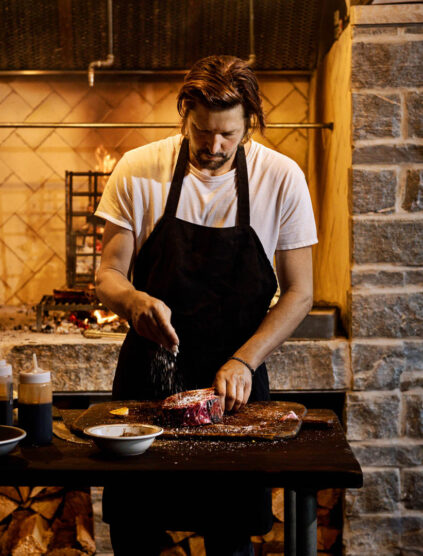
Le Tambour’s interior likely veers drastically from the kitchen and dining room at Paul’s grandparents’ house as well as the Piedmontese tavernas where he rediscovered his mojo. Built in the late 1800s at 345 James Street North—now conveniently near the West Harbour GO train station for any curious Torontonians—it was once a tavern and rooming house and, more recently, a punk bar. A recent two-year renovation has created a warm, high-ceilinged space that offers the intimate charm of a Parisian bistro with a footprint roomy enough for raucous late-night headbanging. Diners are greeted at a massive horseshoe-shaped bar surrounded by diner-style stools and overlooked by a whimsical mural of animals playing drums (a nod to the restaurant’s name, “the drum” in French) by local artist Barbara Klunder. To its rear, the exposed brick of the sprawling main dining room is lit by massive paned windows that run along one wall right up to its rear, where a humble kitchen, outfitted with a meat locker and open fire, is on full view.
Maintaining the farm-to-table throughline that defines the cooking at all of Paul’s restaurants, Le Tambour’s menu features massive cuts of meat straight from the loins hanging in the well-stocked meat locker, locally caught fish, and seasonal vegetables cooked over the large fire that anchors the open kitchen. As with his other restaurants, beef is the star of the show, and the bone-in strip loin served with tavern fries and roast vegetables puts on a riveting performance. Intended for two, the meat, topped with half a hockey puck’s worth of herb butter and bordered by the mustard-dappled roasted vegetables, is served on a board big enough to surf on. Despite the enormity of the steaks, diners will no doubt be tempted to explore some ancillary dishes. While there are a good number of other mains intended for one—roasted hen and trout among them—meat-laden diners will be better served opting for a selection from the raw bar. Oysters (dressed and undressed) and clams can be ordered individually or, when on the menu, as a part of heaping platters that also include bites like Cajun-seasoned shrimp, scallop sashimi, smoked trout rillette, and a pickled egg.
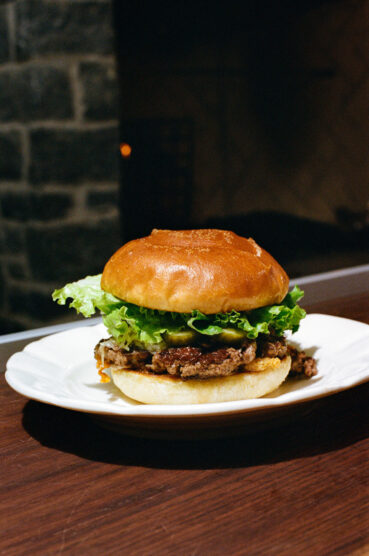
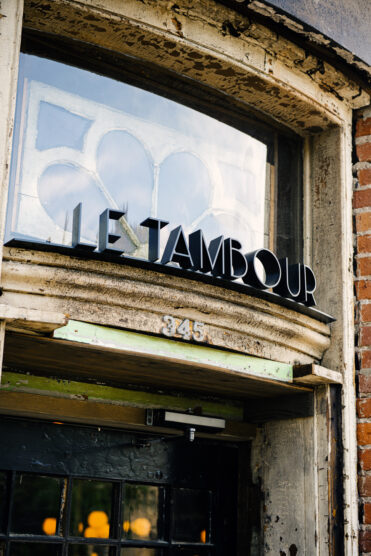
Le Tambour’s drink program is simple, tending toward generalist bistro-style wines and cocktails that complement Paul’s bare-bones cooking rather than overwhelm it. The wines ride the line between natural and conventional, but the list tends toward regions well known for their versatility with food. Red, white, and rosé wines from France’s Loire Valley feature prominently, as do wines from less heralded regions such as Cahors, Languedoc, and, of course, Niagara. Ciders from Normandy’s Maison Hérout and Grey County’s Grey & Gold Cider round out the slight but thoughtful bottle offerings. The cocktails tend to play with Canadian recipes—such as the Tambour Caesar, a take on the Calgarian classic made with garlic-and-dill-infused vodka—or Canadianize internationally famous ones—like the peach daiquiri made with fresh Ontario peach juice.
While the food and, indeed, the location of Le Tambour are meant to attract and inspire worldly encounters, there is an ineffable quality about the restaurant that goes beyond well-cooked cuts of local beef served in a charming room. When the sun begins to fade, and Paul’s anxiousness at the start of yet another dinner service begins to rise, he stops to offer a bit of esoteric wisdom about how he instructs fellow chefs to cook. “I try to get people to cook like it’s their mother out there,” he says, as the woman at the bar politely interrupts to ask for a cigarette. “Sometimes something stops you inside. You get a little bit hesitant. A little bit contrived. I try to encourage people to get past that and just let it go and cook with force, with a feeling.” Whether you come for a mammoth cut of beef or a cup of coffee and some conversation, Le Tambour feels of the world and out of it at the same time.
